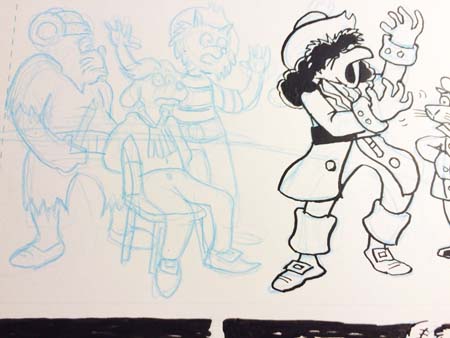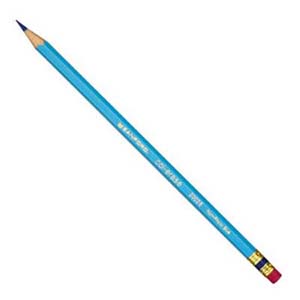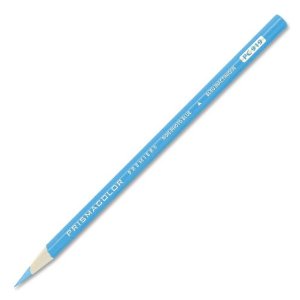'toon Tips
I'm Gonna Rub ya out, ya mugs....or not!
This issue's 'toon tip has to do with a preference of mine.
One thing you will always find in the studio of any cartoonist other than loads of coffee, are
erasers of all kinds. Pink erasers, Art Gum erasers, kneaded erasers, etc. Well, white out, too.
But erasers are just a fact of life. In the days of old when a cartoonist was finished with an
illustration and the ink had dried, then came the task of erasing any leftover pencil lines and
marks before sending the product off to print.
Even though artwork is usually scanned now, in house and sent digitally to a client or printer,
that hasn't changed. The scanner will pick up any un-erased pencils, even very light pencils.
Especially if you're scanning a black and white document. A light pencil mark will scan as black.
I found this a little frustrating. Partially, because I favor soft lead 5B pencils. They leave
heavy dark lines, even with minimal pressure. Due to a touch of arthritis and nerve damage from my
military days constantly rubbing an eraser over paper was uncomfortable. Not to mention going
through kneaded erasers like they were going out of style. The solution was right in my face and I
did not see it though. It took a chance conversation with Neal Adams at a Comic-Con for me to
realize how to save myself the trouble and time. What he said was simple. "Use blue pencils".
As a trained graphic designer I already had a box of 'em. Non-Photo Blue pencils and markers don't
scan….that's why they're called Non-Photo Blue. I used them all of the time to establish
registration lines, gutters and panel borders. Why not just use them to actually draw? I started
doing just that.
Here's an example:

As you can see in this small piece of an upcoming issue of Captain Mojo, I've sketched out the characters in Non-Photo Blue. After its inked I don't have to erase the blue lines, I can clean up and errant lines and marks in the ink with a little white out or an x-acto knife. If I'm particularly lazy, just erase them in Photoshop. But the result is the same.


I generally use a hard lead prismacolor Non-Photo Blue pencil to lightly sketch the figures, and
then use a prismacolor SOFT-lead Non-Photo Blue pencil to fill in details and shadows.
The soft lead IS harder to erase, (it's a bit waxy) but it's nothing like trying to erase straight
black lead. After the characters are inked I go through the images and apply the backgrounds.
Personally I don't ink the panel borders. I use a black India ink marker to put in registration
marks and apply the borders in Photoshop. That's a preference though, not a time saving move. (NOTE: I'm left handed so I tend to ink things from right to left to keep my hand from dragging
in wet ink)
So there's the 'toon-tip. Some people are masters at using normal black lead and getting the lines
exactly where they want them, and then meticulously erasing the lead. For those of us who aren't,
drawing in blue pencil might save you some hair pulling. Next issue I'll discuss another tip Neal
Adams gave me about how he illustrated Batman. Until then, happy 'tooning!
All images used are properties and trademarks of Giant Star Entertainment™
'toon is a registered trademark™ of Giant Star Entertainment





